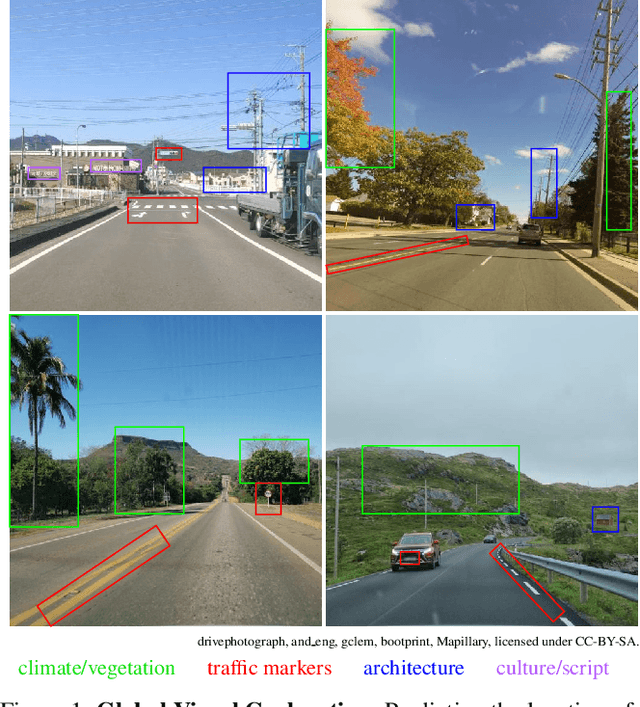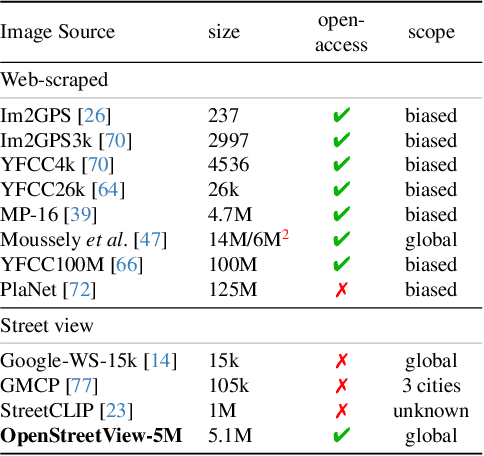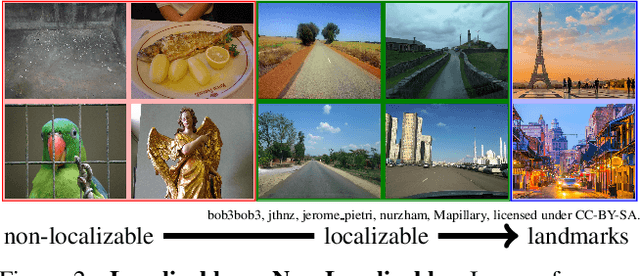Ioannis Siglidis
Diffusion Models as Data Mining Tools
Jul 20, 2024Abstract:This paper demonstrates how to use generative models trained for image synthesis as tools for visual data mining. Our insight is that since contemporary generative models learn an accurate representation of their training data, we can use them to summarize the data by mining for visual patterns. Concretely, we show that after finetuning conditional diffusion models to synthesize images from a specific dataset, we can use these models to define a typicality measure on that dataset. This measure assesses how typical visual elements are for different data labels, such as geographic location, time stamps, semantic labels, or even the presence of a disease. This analysis-by-synthesis approach to data mining has two key advantages. First, it scales much better than traditional correspondence-based approaches since it does not require explicitly comparing all pairs of visual elements. Second, while most previous works on visual data mining focus on a single dataset, our approach works on diverse datasets in terms of content and scale, including a historical car dataset, a historical face dataset, a large worldwide street-view dataset, and an even larger scene dataset. Furthermore, our approach allows for translating visual elements across class labels and analyzing consistent changes.
OpenStreetView-5M: The Many Roads to Global Visual Geolocation
Apr 29, 2024



Abstract:Determining the location of an image anywhere on Earth is a complex visual task, which makes it particularly relevant for evaluating computer vision algorithms. Yet, the absence of standard, large-scale, open-access datasets with reliably localizable images has limited its potential. To address this issue, we introduce OpenStreetView-5M, a large-scale, open-access dataset comprising over 5.1 million geo-referenced street view images, covering 225 countries and territories. In contrast to existing benchmarks, we enforce a strict train/test separation, allowing us to evaluate the relevance of learned geographical features beyond mere memorization. To demonstrate the utility of our dataset, we conduct an extensive benchmark of various state-of-the-art image encoders, spatial representations, and training strategies. All associated codes and models can be found at https://github.com/gastruc/osv5m.
The Learnable Typewriter: A Generative Approach to Text Line Analysis
Feb 06, 2023Abstract:We present a generative document-specific approach to character analysis and recognition in text lines. Our main idea is to build on unsupervised multi-object segmentation methods and in particular those that reconstruct images based on a limited amount of visual elements, called sprites. Our approach can learn a large number of different characters and leverage line-level annotations when available. Our contribution is twofold. First, we provide the first adaptation and evaluation of a deep unsupervised multi-object segmentation approach for text line analysis. Since these methods have mainly been evaluated on synthetic data in a completely unsupervised setting, demonstrating that they can be adapted and quantitatively evaluated on real text images and that they can be trained using weak supervision are significant progresses. Second, we demonstrate the potential of our method for new applications, more specifically in the field of paleography, which studies the history and variations of handwriting, and for cipher analysis. We evaluate our approach on three very different datasets: a printed volume of the Google1000 dataset, the Copiale cipher and historical handwritten charters from the 12th and early 13th century.
 Add to Chrome
Add to Chrome Add to Firefox
Add to Firefox Add to Edge
Add to Edge